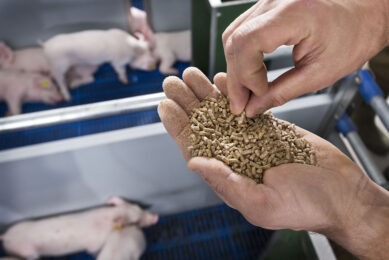Research: Beet pulp for sows and sheep
Danish research evaluated the nutritional value of biofuel residues from beet when used in sows and sheep. An alternative substrate in the biogas or bioethanol production may be the sugar containing juice obtained after fractionation of beets into a juice used for fermentation and into a pulp used for feeding.
The objective of this experiment was to evaluate the fresh pulp of top and root from sugar (Angus) and fodder (Colosse) beets as feed for pigs and ruminants.
The pulp was prepared by a cold mechanical pressing. Two digestibility experiments were carried out according to the difference method.
Trial setup
In experiment 1, 30 sows were housed individually in metabolic cages for 12 d, and urine and faeces were collected during the last 7 d.
In experiment 1, 30 sows were housed individually in metabolic cages for 12 d, and urine and faeces were collected during the last 7 d.
The daily ration consisted of either root or top pulp combined with a basal diet. In experiment 2, 25 wethers (castrated male sheep) were housed individually, and faeces were collected during the last 7 d of the experiment.
The daily ration was either root or top pulp combined with hay.
The chemical composition of the pulp of the 2 beet varieties varied only little.
However, the top fraction contained more ash (150 vs. 34 g/kg DM), crude protein (175 vs. 53 g/kg DM) and total dietary fibre (460 vs. 206 g/kg DM) compared to the root fractions.
Results
The in vitro and the apparent digestibility of sows and wethers were higher for root pulp than for top pulp, whereas there were no differences between the two beet varieties.
The in vitro and the apparent digestibility of sows and wethers were higher for root pulp than for top pulp, whereas there were no differences between the two beet varieties.
Conclusion
The fresh root pulp may be considered a good energy source for both sows and ruminants, whereas the fresh top pulp may serve as a satiety-enhancing feedstuff for sows.
The fresh root pulp may be considered a good energy source for both sows and ruminants, whereas the fresh top pulp may serve as a satiety-enhancing feedstuff for sows.
The protein value of both root and top pulp is considered to be low.
Join 18,000+ subscribers
Subscribe to our newsletter to stay updated about all the need-to-know content in the pigsector, three times a week. Beheer
Beheer










 WP Admin
WP Admin  Bewerk bericht
Bewerk bericht